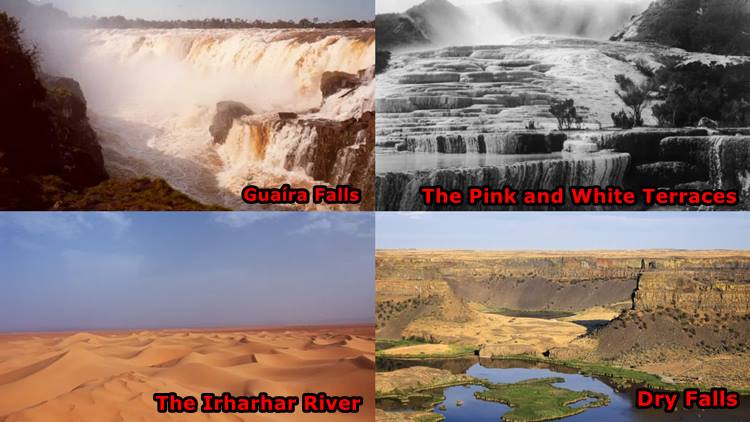Here are the Places That No Longer Exist
Places That No Longer Exist – Some places are really hard to find, especially if you are not familiar but there are places that you can’t really find because they no longer exist.
Guaíra Falls
It is a series of at least 18 waterfalls that can be seen along the Brazil-Paraguay border. The Paraguayan and Brazilian governments began constructing the Itaipú Dam, part of a massive power plant, in the 1970s. When it was completed in 1982, the Guaíra Falls was gone, based on the article in Mental Floss.
The Pink and White Terraces
It is the Eighth Wonder of the World located in New Zealand. The once-considered tourist attraction was destroyed when Mount Tarawera erupted in 1886.

Rungholt
A cyclone known as the Grote Mandrenke, or “Great Drowning of Men,” hit the island named Strand off the northwestern coast of what’s now northern Germany and a big part of it was wiped out, including the medieval town of Rungholt.
East Island
This place which was part of the French Frigate Shoals of the Hawaiian Islands was swallowed by the sea after a 2018 hurricane.
Doggerland
This place gained the “The Atlantis of the North Sea” moniker and remained hidden beneath the surface until the early 1930s.
Bering Land Bridge
It was theorized that humans came to the Americas via the Bering Land Bridge. However, at the end of the Ice Age, it was said that it became submerged.
The Irharhar River
The river that once flowed in Africa was considered to have had a major effect on early human migration is now vanished.
Dry Falls
The disappearance of the Dry Falls in Washington was caused by several devastating floods at the end of the last ice age.
Old Man of the Mountain
The erosion caused by the freeze and thaw cycles of the warming climate carved an astonishingly human-like shape into the rock in New Hampshire but it was damaged by time and it eventually collapsed on May 3, 2003.
Nuna Supermountains
A 2022 study published in Earth and Planetary Science Letters stated that their erosion brought advantages because they sent a deluge of phosphorus, iron, and other nutrients into the ocean, and bumped up the amount of oxygen in the atmosphere.
